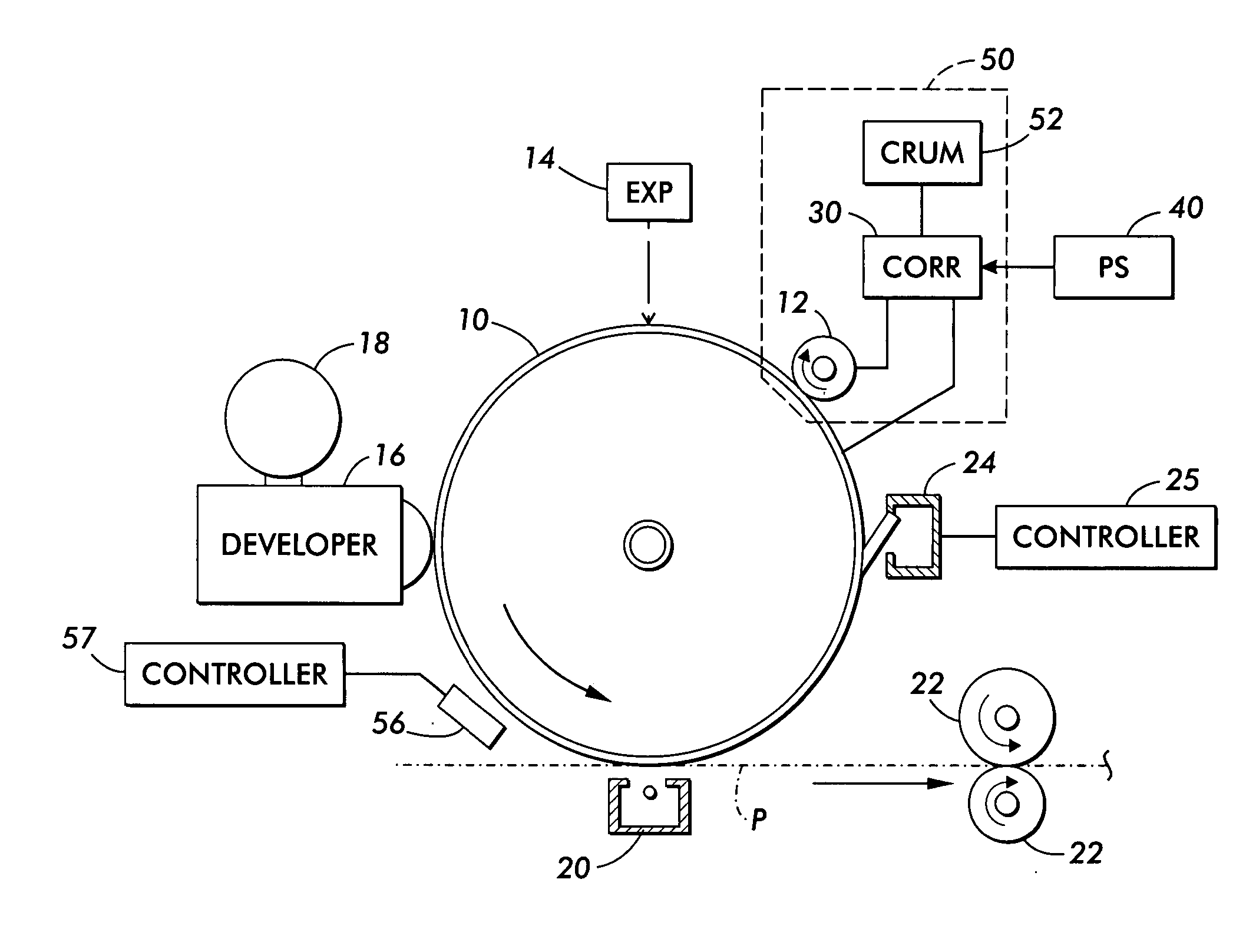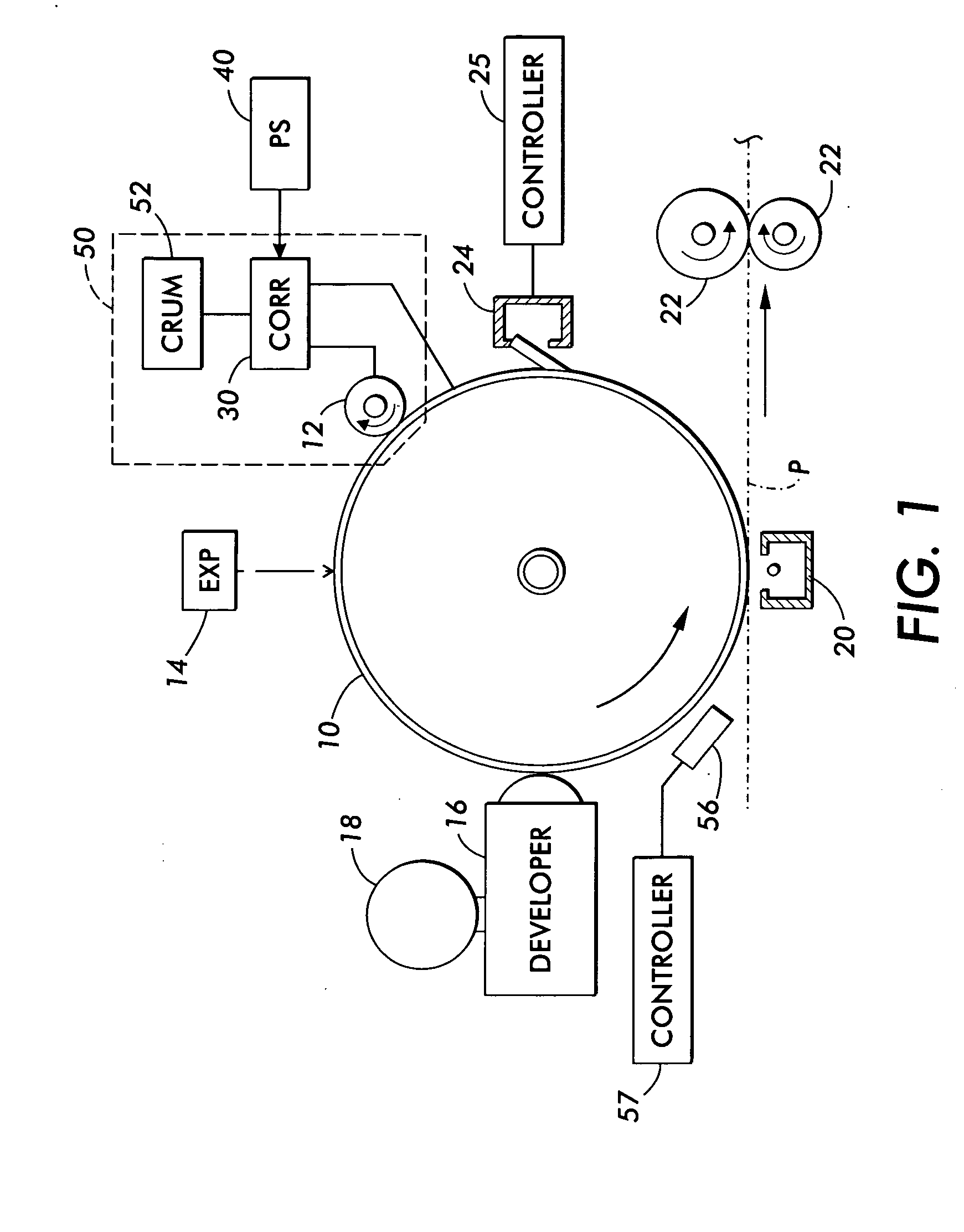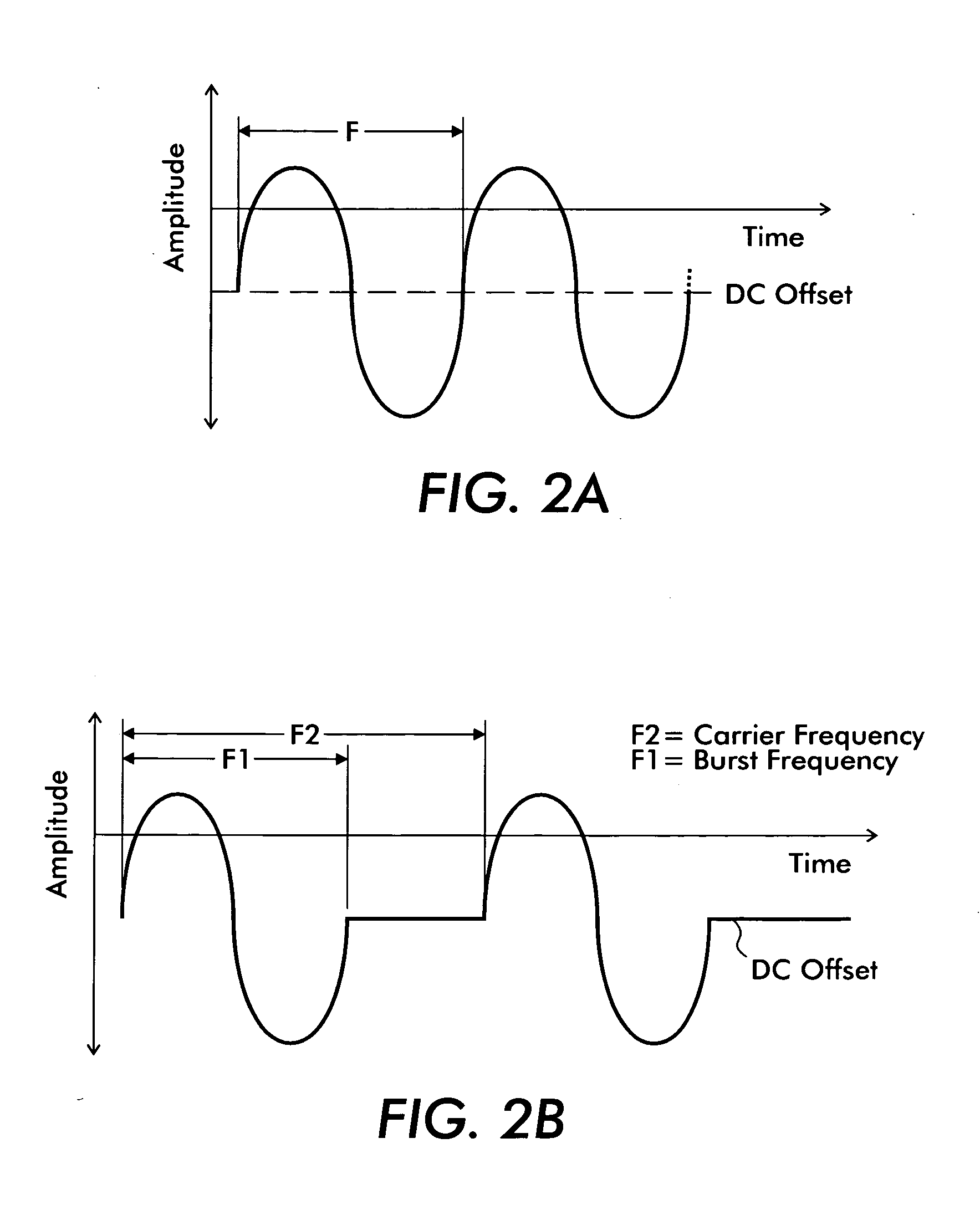System and method for extending the life of a charge receptor in a xerographic printer
- Summary
- Abstract
- Description
- Claims
- Application Information
AI Technical Summary
Benefits of technology
Problems solved by technology
Method used
Image
Examples
Embodiment Construction
[0013]FIG. 1 is a simplified elevational view of the essential elements of a xerographic printing apparatus. As is well known in the art of xerography, a printing apparatus includes a rotatable photoreceptor 10, here in the form of a rotating drum, around the circumference of which are the various stations with which a series of images desired to be printed are created. Initially, a surface of the photoreceptor 10 is charged by charging device here indicated as 12. In various embodiments of printing apparatus, this charging device 12 can be in the form of a corotron, or other ion-generating device, but in this particular embodiment is in the form of a “bias charge roll” or BCR. The BCR 12 contacts or rolls against a surface of photoreceptor 10 along the length thereof, and places a uniform charge of predetermined magnitude on the surface of photoreceptor 10. After the surface of photoreceptor 10 has been uniformly charged, the surface is imagewise discharged by an exposure device he...
PUM
 Login to view more
Login to view more Abstract
Description
Claims
Application Information
 Login to view more
Login to view more - R&D Engineer
- R&D Manager
- IP Professional
- Industry Leading Data Capabilities
- Powerful AI technology
- Patent DNA Extraction
Browse by: Latest US Patents, China's latest patents, Technical Efficacy Thesaurus, Application Domain, Technology Topic.
© 2024 PatSnap. All rights reserved.Legal|Privacy policy|Modern Slavery Act Transparency Statement|Sitemap



